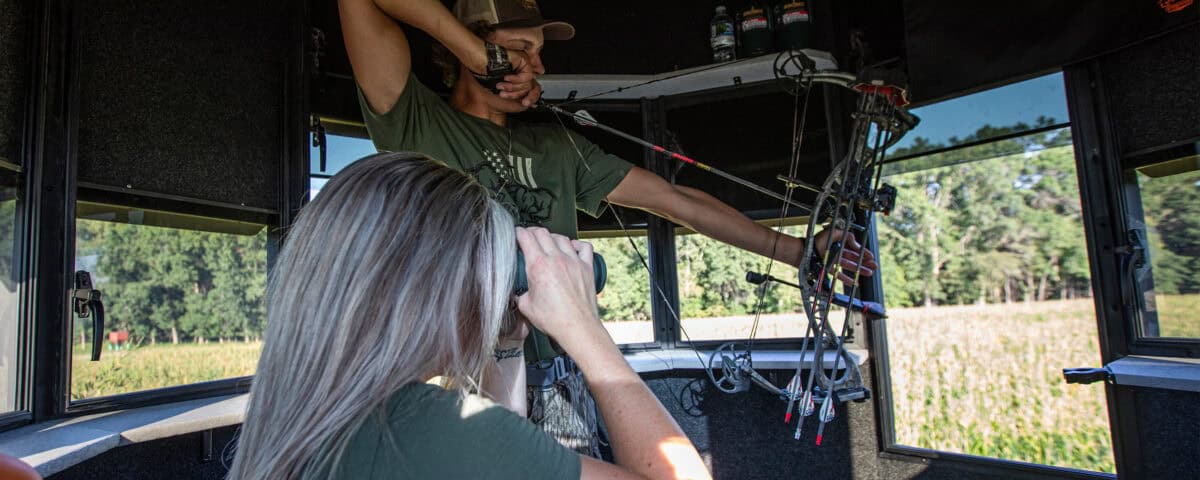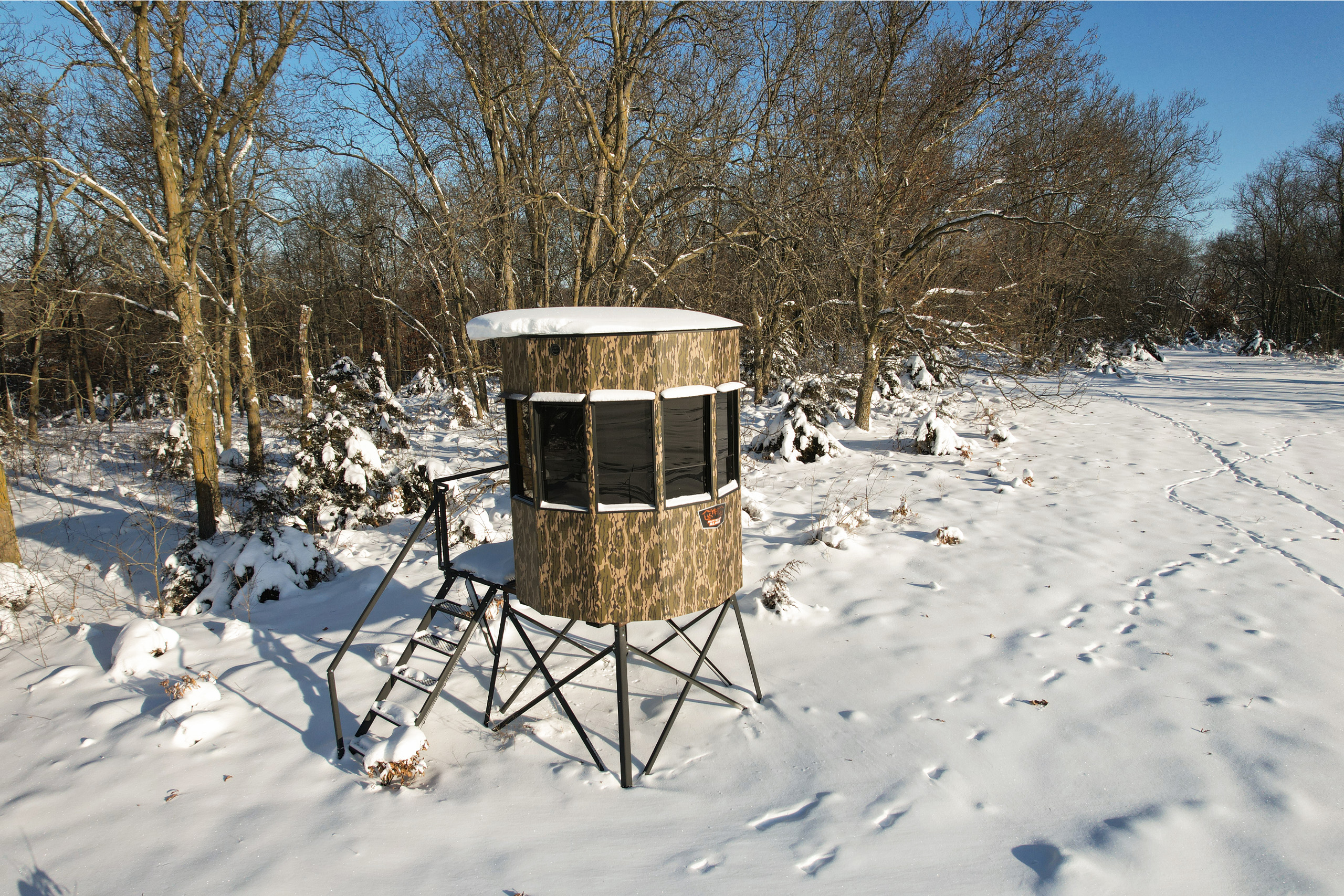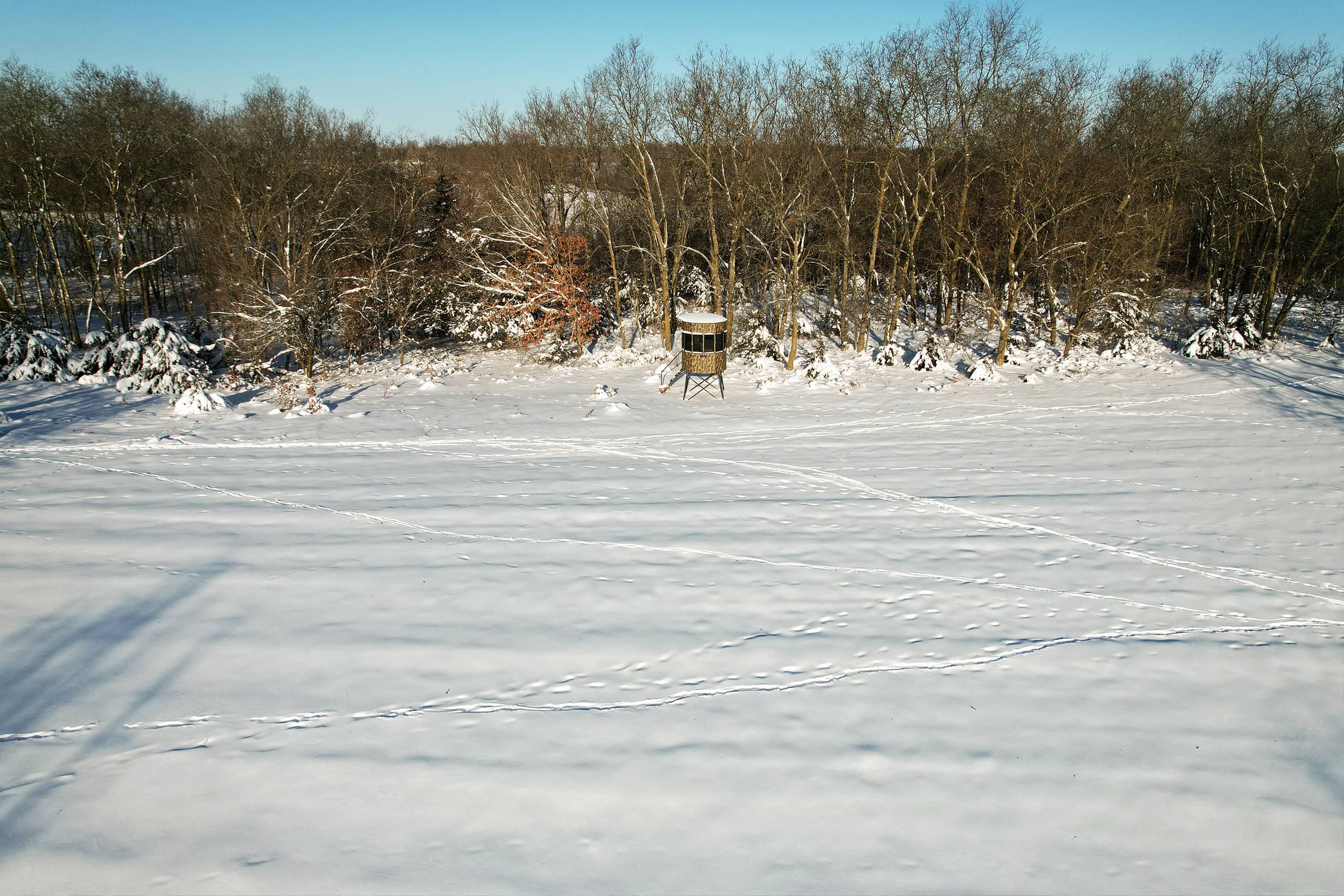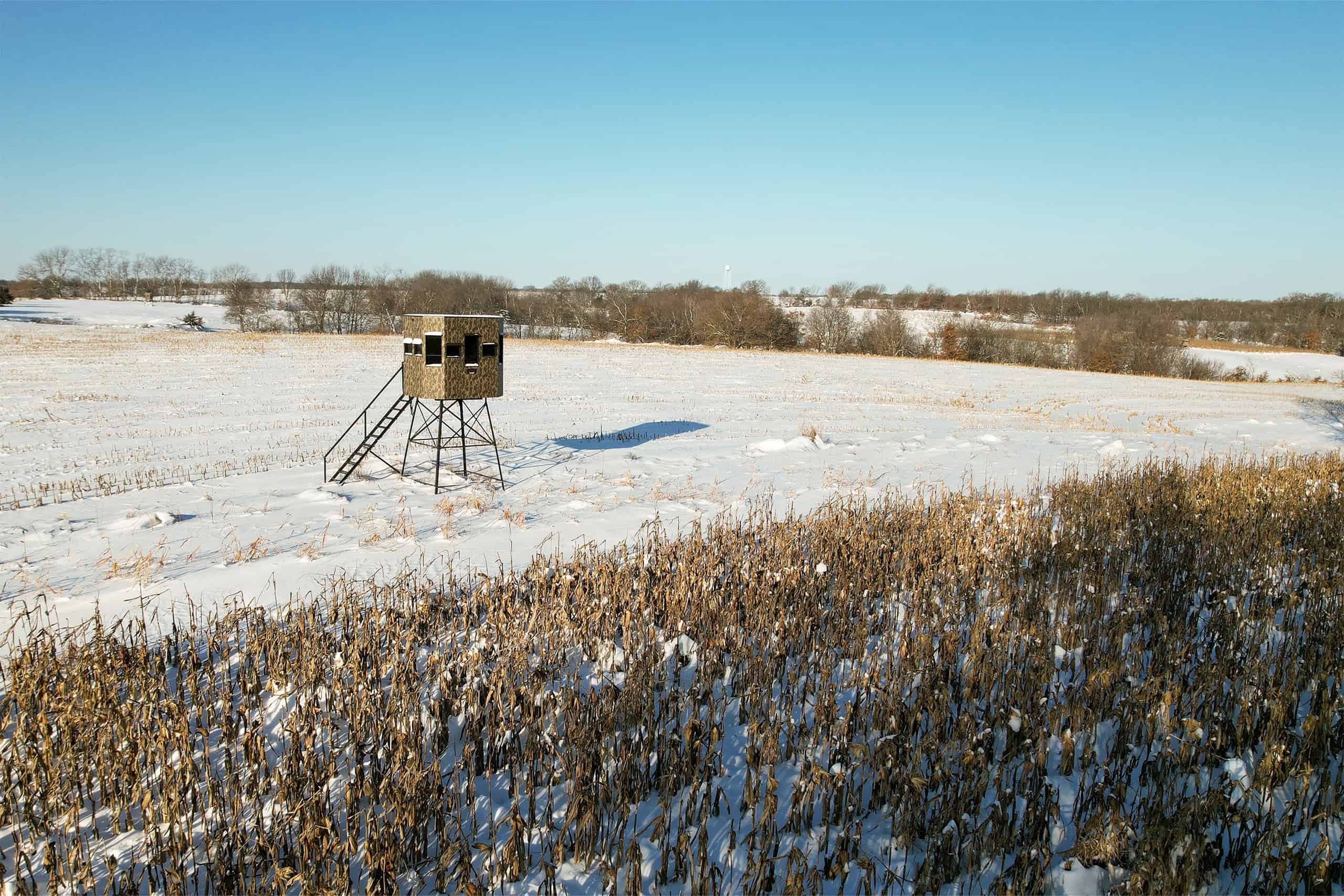How to Make the Most of Pre-Rut with Expert Tips
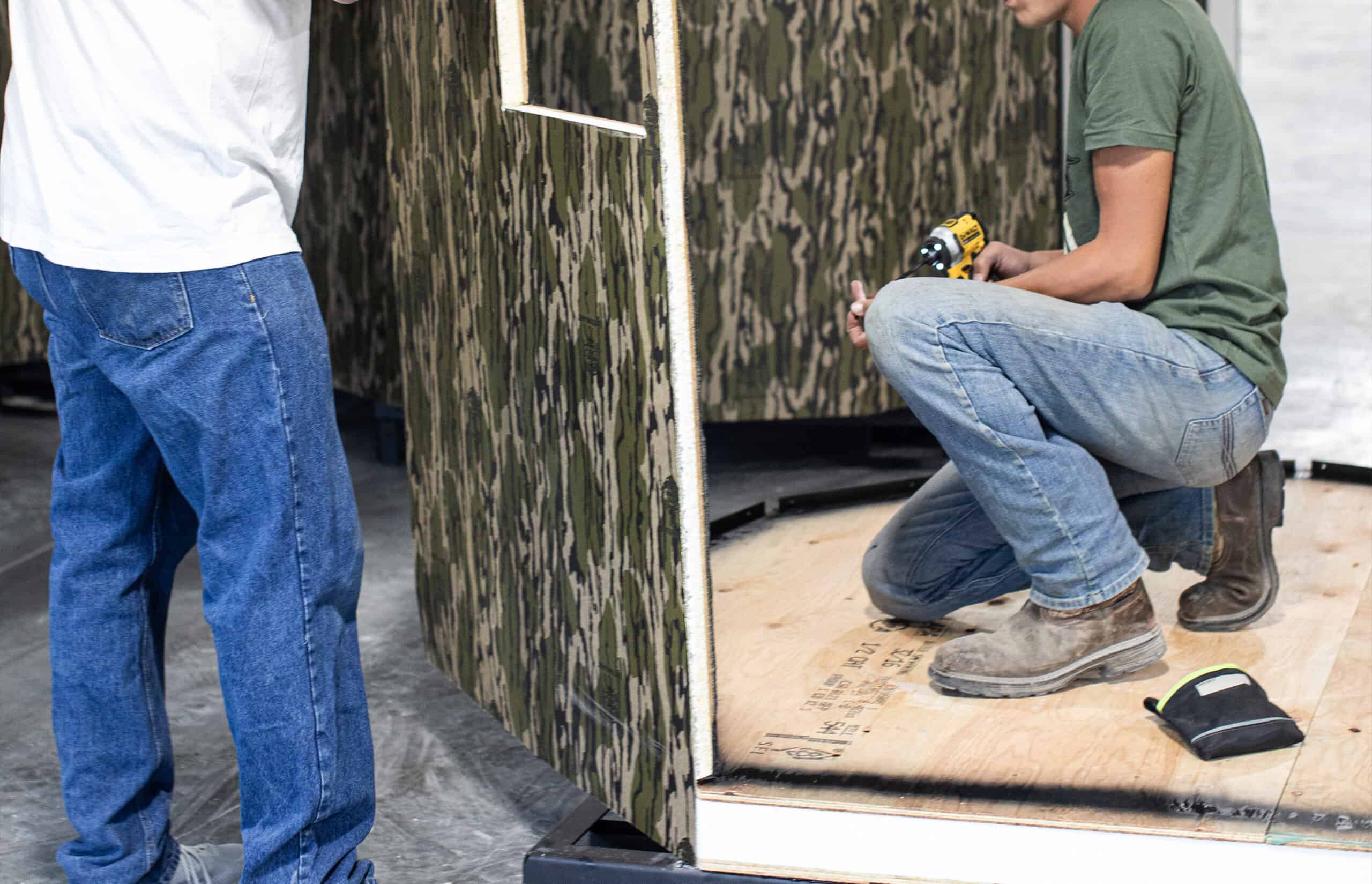
What Materials Are Hunting Blinds Made of?
October 7, 2024
Durable Hunting Blinds That Outlast and Outperform the Competition
October 7, 2024Understanding the Pre-Rut
The pre-rut is an exciting time for hunters because it’s when mature bucks begin to exhibit noticeable changes in behavior, setting the stage for the peak rut. Often starting in the last 15 days of October, bucks become more active during daylight hours, marking their territory with rubs and scrapes as they prepare for the breeding season. During this phase, bucks are not yet chasing does aggressively, but they are establishing dominance over their home range, competing with other males, and scent-marking their core areas.
Key behaviors to watch during this period include increased movement, especially during cool mornings and just before dusk. Bucks will start cruising more frequently, testing the boundaries of their range but still staying relatively close to their bedding areas. This makes the pre-rut a prime opportunity to target mature bucks before they start wandering far and wide during the peak rut. Keep an eye out for rub lines and fresh scrapes, as these are signs of a buck establishing dominance in the area. Bucks may also become more responsive to calls and rattling during this time as they search for early signs of does entering heat.
Optimal Blind Placement for Early Movement
During the pre-rut, blind placement can make or break your success. Bucks are more active but still remain cautious, staying close to their core areas where they feel secure. The goal is to set up your blind along travel corridors between a buck’s bedding area and feeding grounds, as this is where you’re most likely to catch them moving during daylight hours. Placing your blind near natural funnels, pinch points, or edges between open fields and thick cover increases the chances of intercepting a buck as he moves through his territory.
Rutted-Up Blinds are ideal for this phase because their airtight, insulated design keeps you comfortable, and concealed, and minimize your scent while waiting out the subtle movements of mature bucks. Try positioning your blind near known travel routes, especially those leading to and from bedding areas. Morning hunts near these areas are particularly productive during the pre-rut, as bucks tend to move later into the morning before temperatures rise. Where possible, look to place your blind alongside or in some natural cover to minimize its visibility and help it blend seamlessly into the environment, as long as it doesn’t compromise your range or visibility.
Scouting for Success
Effective scouting is essential during the pre-rut, as it allows you to pinpoint where bucks are most active and where you should set up your blind. Begin by looking for signs of fresh rubs and scrapes, which are clear indicators that a mature buck is frequenting the area. Bucks create these rubs to mark territory and leave their scent behind, signaling their dominance to other deer. Scrapes, often located along field edges or trails, serve as communication points where bucks and does exchange scent signals.
Trail cameras are your best friend during the pre-rut. Set them up near these rub lines, scrapes, and along natural funnels to capture buck movement and pattern their behavior. Use this data to identify key times of day when bucks are on the move and place your blind accordingly. Keep in mind that bucks are still sticking close to their bedding areas, so finding a travel route that connects bedding to feeding areas is critical.
Also, pay attention to the weather. A major cold front can significantly increase deer movement during the pre-rut, so scouting right after a temperature drop will help you identify fresh signs of buck activity. The combination of careful observation and strategic trail camera use will give you the insight you need to target mature bucks effectively during this phase.
Morning Hunts: Capitalizing on Early Buck Movement
During the pre-rut, morning hunts can be some of the most productive times to catch bucks on the move. As temperatures drop overnight, bucks are more likely to be active during the cooler morning hours, especially after a frost or a significant cold front. Mature bucks will often cruise through their core areas, checking scrapes and marking their territory in the hours right after sunrise.
To capitalize on this early movement, position your blind along travel routes between bedding areas and locations where bucks are likely to scent-check for does. Brushy corridors, ridgelines, and natural funnels between thick cover and open fields are prime spots for morning setups. The key is to set up close to a buck’s bedding area without spooking him—morning is the time when bucks will head back to bed after a night of feeding and patrolling.
With Rutted-Up Blinds, you’ll have the advantage of a well-insulated, soundproof structure, allowing you to move inside the blind once the blind is placed without alerting nearby bucks. Be sure to arrive well before first light, settle in quietly, and wait for the increased buck activity that typically peaks 2-3 hours after sunrise. Morning hunts offer the best opportunity to catch bucks moving naturally before they bed down for the day.
Evening Setups and Positioning Near Food Sources
As temperatures cool in the late afternoon, bucks tend to become active again, particularly as they move toward food sources to refuel after a day of bedding. Evening hunts during the pre-rut are best positioned near reliable food sources like crop fields, food plots, or natural forage areas. Bucks will often make their way to these locations during the last hour of daylight, giving you a narrow but crucial window to take advantage of.
Position your blind (ideally downwind, but Rutted Up Blinds are airtight so it’s no big deal to be upwind either) of the food source, but not too close. Bucks, especially mature ones, tend to linger in the cover of the woods, scent-checking and observing the area before stepping out to feed. Set up along the edge of thick cover or in a staging area, where bucks feel secure before moving into the open. This gives you a chance to intercept them before darkness sets in.
Evening setups are particularly effective when you combine knowledge of buck feeding patterns with recent scouting data from trail cameras. Rutted-Up Blinds offer excellent concealment, allowing you to stay hidden and quiet as you wait for bucks to arrive at the food source. Be patient, as the action typically heats up during 4 – 7 PM.
How to Scout for Pre-Rut Signs: Rubs, Scrapes, and Core Areas
Scouting during the pre-rut is critical to locating mature bucks and understanding their movement patterns. The most telling signs to look for during this time are rubs and scrapes. Rubs are created when bucks use their antlers to strip bark from trees, marking their territory and releasing scent from their glands. A fresh rub line, especially on larger trees, indicates the presence of a dominant buck in the area. Follow the rub line to determine where a buck might be moving between bedding and feeding areas.
Scrapes are another key sign to track. Bucks use scrapes as a way to communicate with other deer, pawing the ground and licking overhanging branches to leave scent marks. These scrapes are often found along field edges, trails, and in travel corridors. Fresh, active scrapes are a clear sign that bucks are frequenting the area. You can set up trail cameras over these scrapes to monitor buck activity and pattern their movements.
Core areas—where a buck spends most of his time—are usually thick with cover, offering security and protection. Look for bedding areas in dense woods or brush, where bucks can rest undisturbed. During the pre-rut, bucks will often stick close to their core areas, traveling in predictable patterns. Use this to your advantage by placing your blind along travel routes that connect bedding to feeding areas.
By scouting these signs and understanding a buck’s movements during the pre-rut, you can strategically place your Rutted-Up Blind in the perfect location to intercept him during daylight hours.
Cold Mornings and Travel Corridors
Cold mornings during the pre-rut phase are some of the best times to catch mature bucks on their feet. When temperatures dip significantly, especially after a cold front, bucks become more active during daylight hours, making this the ideal time to hunt. Bucks will use travel corridors—natural paths between bedding and feeding areas or along ridgelines, fence lines, or thick cover—to move securely while checking scrapes and rubs. These corridors serve as highways for bucks, allowing them to move undetected as they scent-check their territory for does.
Position your blind near these travel corridors, but ensure it’s downwind and well-concealed. Using a Rutted-Up Blind provides an added advantage with its airtight construction and sound-dampening features, allowing you to move and stay comfortable without spooking nearby deer. Focus on hunting during cold mornings when the bucks are more likely to be cruising these corridors, especially a couple of hours after sunrise.
How to Use Calling and Grunting Effectively During Pre-Rut
During the pre-rut, bucks are establishing dominance and are more receptive to vocal cues like calling and grunting. Grunting, in particular, mimics the sounds of a buck asserting its dominance, challenging other bucks or attracting does. Start with soft grunts to simulate a buck moving through the area. If no response follows, you can escalate to a series of louder, more aggressive grunts to grab the attention of nearby bucks.
Using calls effectively requires timing and restraint. Bucks during the pre-rut are not yet chasing does but are still territorial, so over-calling can spook them. Instead, focus on subtle, well-timed calls, especially if you’re set up near a travel corridor or scrape line. A Rutted-Up Blind allows you to remain hidden and otherwise quiet while making calls, ensuring that you stay undetected as you wait for a buck to respond and move in your direction.
Why Scent Control is Crucial
Scent control during the pre-rut can be the difference between success and failure. Bucks are cautious at this stage, and their sense of smell is their strongest defense. As they travel through their core areas, they will frequently scent-check for intruders or nearby does. Even the slightest hint of human scent can cause a buck to change his course or avoid the area altogether.
To maximize your chances, use scent-eliminating sprays on your gear and clothing before heading to your stand. Be mindful of the wind direction, always positioning your blind downwind of where you expect deer to approach. Rutted-Up Blinds offer an airtight design that helps trap your scent inside, providing a significant advantage in scent control. Remember, even if you’re perfectly positioned, a wrong wind or a lack of scent control can blow your best opportunity to get that buck you’ve had your eye on.
When Does the Pre-Rut End and What to Expect Next?
The pre-rut typically ends when a large percentage of does enter heat, signaling the transition into the peak rut. This shift usually occurs in early November (depending on your region). During the pre-rut, bucks are primarily focused on establishing dominance and marking their territory. However, once the rut kicks in, their primary objective becomes breeding, and their movements become less predictable as they start roaming further in search of receptive does.
Expect a noticeable drop in daylight activity from mature bucks as they lock down with does for breeding. The high degree of randomness during the peak rut can make it challenging to pattern a specific buck, but it also presents opportunities as bucks roam far beyond their core areas, sometimes showing up in places they typically avoid. Knowing the shift from pre-rut to peak rut helps you anticipate changes in deer behavior and adjust your strategies accordingly.
Common Pre-Rut Mistakes and How to Avoid Them
The pre-rut is one of the most productive times to hunt, but common mistakes can cost you a shot at that mature buck. Avoid these pitfalls to make the most of the pre-rut:
- Overcalling:
One of the biggest mistakes hunters make during the pre-rut is overusing calls and grunts. While bucks are starting to show territorial behavior, excessive or too aggressive calling can spook them. Stick to subtle calls, like soft grunts, and increase intensity only if you know there’s a mature buck in the area. - Poor Scent Control:
Failing to properly manage your scent can easily ruin a hunt. During the pre-rut, bucks are cautious and will avoid any areas where they catch a whiff of human scent. Always hunt with the wind in your favor, try using scent-eliminating products if you’re so inclined, and consider an airtight Rutted-Up Blind for additional scent control. - Not Hunting Mornings:
Many hunters skip morning hunts during the pre-rut, missing out on the prime hours when bucks are more active after a cold night. Don’t make the mistake of only hunting evenings; mornings can often yield better results. - Ignoring Weather Changes:
Bucks become more active when cold fronts hit. Failing to adjust your hunting schedule to take advantage of cooler weather can mean missing prime pre-rut activity. Watch for significant temperature drops and keep your schedule flexible so you can hunt immediately following the weather changes.
Top Pre-Rut Gear: What to Have for Maximum Success
Success during the pre-rut phase requires not just strategy but also the right gear. Here’s what you should have to ensure you’re ready for everything the pre-rut throws at you:
- Rattling Antlers or Grunt Call:
Subtle calling can attract bucks that are just beginning to show dominance. Carrying a grunt tube or rattling antlers will help you mimic natural sounds without overdoing it. - Scent Control Products:
Bring scent-eliminating sprays for your clothing and gear, and use scent-proof bags for storage. You may also want scent attractants, such as doe scent, to entice bucks. - Trail Cameras:
Deploy trail cameras near rubs, scrapes, and travel corridors to track pre-rut activity. This will help you pattern bucks’ movements and determine the best times to hunt. - Layers of Clothing:
Pre-rut weather can be unpredictable. Mornings are often cold, while afternoons may warm up quickly. Layering your clothing helps you stay comfortable throughout the day. - Quality Binoculars:
Scanning for bucks at a distance can give you the edge during the pre-rut. A good pair of binoculars allows you to observe movement without giving away your position. - Rutted-Up Blind:
A high-quality blind, like those from Rutted-Up, provides comfort and concealment, allowing you to hunt longer without worrying about scent control, wind direction, or movement.
Using Rutted-Up Blinds to Maximize Concealment and Comfort
Rutted-Up Blinds are the perfect tool for pre-rut hunting, providing top-tier concealment, comfort, and durability. These blinds are designed to keep hunters warm and hidden, making them a game-changing asset during this critical phase of the season. Here’s how Rutted-Up Blinds help maximize your success:
- Superior Scent Control:
Rutted-Up Blinds are airtight, which helps trap your scent inside and prevents it from drifting into the deer’s nose. This feature is critical during the pre-rut when bucks are more alert and cautious. Even when you’re downwind, a Rutted-Up Blind provides that extra layer of security to keep your scent concealed. - Silent and Stealthy:
Pre-rut bucks are on high alert, and even the slightest noise can spook them. Rutted-Up Blinds feature sound-dampening construction, allowing you to move within the blind without creating disruptive noise. Whether you’re shifting to get in position for a shot or grabbing gear, these blinds go a long way to help you stay quiet. - All-Weather Comfort:
Cold mornings and variable temperatures are common during the pre-rut, but Rutted-Up Blinds are fully insulated to keep you comfortable no matter the weather. With thick walls and sturdy construction, these blinds provide warmth and protection from wind, rain, and snow, allowing you to extend your hunting hours without discomfort.
Final Thoughts: Making Pre-Rut Hunting a Core Part of Your Strategy
Pre-rut hunting is one of the most exciting and rewarding phases of the season. Bucks are becoming more active, but they’re still predictable, offering you the perfect opportunity to pattern and hunt them successfully. With the right strategies, gear, and knowledge of deer behavior, you can turn this phase into a prime opportunity for a successful harvest.
Make pre-rut hunting a core part of your strategy by focusing on key tactics such as hunting during cold mornings, using subtle calling techniques, and prioritizing scent control. With the help of Rutted-Up Blinds, you can maximize your chances by staying concealed, comfortable, and ready for action no matter the conditions.
Whether you’re a seasoned hunter or new to the pre-rut phase, don’t overlook the importance of preparing for this critical period. Gear up, stay stealthy, and make your next pre-rut hunt one to remember!
Ready to take your pre-rut hunting to the next level? Explore our range of high-performance Rutted-Up Blinds and give yourself the edge you need this season. Don’t wait—visit our shop today and make sure you’re fully equipped to take the buck of a lifetime!

